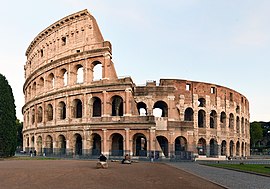Throughout history, people have been fascinated by the world’s natural and man-made wonders. From the ancient pyramids of Egypt to the towering skyscrapers of modern times, these awe-inspiring structures and landmarks continue to capture our imagination and inspire us to dream big.

Join our WhatsApp Channel

Join our Telegram Channel

Subscribe our YouTube Channel
In ancient times, the Greeks compiled a list of what they considered to be the most impressive structures in the world. These became known as the Seven Wonders of the Ancient World, and included:
- The Great Pyramid of Giza, Egypt
- The Hanging Gardens of Babylon, Iraq
- The Temple of Artemis at Ephesus, Turkey
- The Statue of Zeus at Olympia, Greece
- The Mausoleum at Halicarnassus, Turkey
- The Colossus of Rhodes, Greece
- The Lighthouse of Alexandria, Egypt
While many of these structures have been lost to time, destroyed by natural disasters or human actions, their legacy lives on. In modern times, a new list of Seven Wonders of the World was created, based on public votes from around the world. These are:
- The Great Wall of China, China
- Petra, Jordan
- The Christ the Redeemer statue, Brazil
- Machu Picchu, Peru
- Chichen Itza, Mexico
- The Colosseum, Italy
- The Taj Mahal, India
1. The Great Wall of China is a series of fortifications built along the northern borders of China, stretching over 13,000 miles. It was constructed over a period of more than 2,000 years, beginning in the 7th century BC and continuing until the Ming dynasty in the 17th century AD. The Great Wall was designed to protect China from invaders and served as a symbol of the country’s strength and power. Today, the Great Wall is a UNESCO World Heritage site and a popular tourist attraction, attracting millions of visitors each year. It is one of the most iconic and recognizable landmarks in the world, a testament to the enduring legacy of Chinese civilization.

2. Petra is an ancient city located in Jordan, famous for its unique rock-cut architecture and impressive water management system. It was the capital city of the Nabataean Kingdom and a major center for trade and commerce in the region. Petra is surrounded by towering cliffs and canyons and is accessed through a narrow pathway known as the Siq. The city is filled with structures carved into the rock, including tombs, temples, and an amphitheater, adorned with intricate carvings and designs. Petra was inhabited by the Nabataeans from the 4th century BC to the 1st century AD and became a UNESCO World Heritage site and a popular tourist destination, attracting visitors from around the world.

3. The Christ the Redeemer statue is an iconic monument located in Rio de Janeiro, Brazil. It stands at a height of 98 feet and is situated on top of the Corcovado Mountain, overlooking the city. The statue is made of reinforced concrete and soapstone, and was designed by French sculptor Paul Landowski and built by Brazilian engineer Heitor da Silva Costa. It was completed in 1931 and has since become a symbol of Brazil and a major tourist attraction, drawing millions of visitors every year. The Christ the Redeemer statue represents the country’s strong Christian faith and serves as a reminder of the importance of compassion, love, and peace.

4. Machu Picchu is an ancient Incan city located in the Andes Mountains of Peru. It was built in the 15th century and served as a religious, political, and cultural center for the Incan empire. The city is situated on a ridge between two peaks and is surrounded by steep cliffs, making it a difficult location to access. Machu Picchu was abandoned by the Incas during the Spanish conquest in the 16th century and remained hidden for centuries until it was rediscovered by American archaeologist Hiram Bingham in 1911. Today, Machu Picchu is a UNESCO World Heritage site and a popular tourist destination, attracting visitors from around the world who come to marvel at the city’s impressive stone architecture and breathtaking views of the surrounding mountains.

5. Chichen Itza is an ancient Mayan city located in the Yucatan Peninsula of Mexico. It was one of the largest cities in the Mayan civilization and served as a major center for trade, politics, and religion. The city was built between the 7th and 10th centuries AD and is known for its impressive stone structures, including the Temple of Kukulcan, a large pyramid-like structure with intricate carvings and designs. Chichen Itza was abandoned by the Mayans in the 13th century and remained hidden for centuries until it was rediscovered by Spanish conquistadors in the 16th century. Today, Chichen Itza is a UNESCO World Heritage site and a popular tourist destination, attracting visitors from around the world who come to learn about the ancient Mayan culture and marvel at the city’s impressive architecture and rich history.

6. The Colosseum, also known as the Flavian Amphitheatre, is an ancient Roman amphitheater located in the heart of Rome, Italy. It was built in the first century AD and served as a venue for gladiatorial contests, public spectacles, and other forms of entertainment. The Colosseum is renowned for its impressive size and innovative engineering, with a seating capacity of over 50,000 people and an intricate system of underground passages and trapdoors for staging elaborate spectacles. Over the centuries, the Colosseum has been damaged by earthquakes, fires, and looting, but it remains one of the most iconic symbols of ancient Rome and a major tourist attraction, attracting millions of visitors from around the world every year.

7. The Taj Mahal is an iconic white marble mausoleum located in Agra, India. It was built by the Mughal emperor Shah Jahan in memory of his beloved wife, Mumtaz Mahal, who passed away in 1631. Construction of the Taj Mahal began the following year and took more than 20 years to complete, with the help of thousands of workers and skilled artisans. The mausoleum is renowned for its intricate marble carvings, calligraphy, and Islamic design elements, as well as its beautiful gardens and reflecting pool. Today, the Taj Mahal is a UNESCO World Heritage site and a popular tourist destination, drawing millions of visitors every year who come to marvel at the stunning beauty of this architectural masterpiece and pay homage to one of the greatest love stories of all time.








Yy